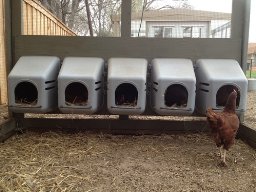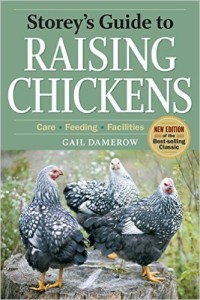 Chicken nesting box plans come in many different sizes, shapes and dimensions. The suggestions for better designs also vary.
Chicken nesting box plans come in many different sizes, shapes and dimensions. The suggestions for better designs also vary.
The large variety of design ideas shows that your chickens are flexible enough to accommodate your personal preferences.
However, when building chicken nest boxes, there are a few design ideas that stand out in view of practicality and function.
Egg Production
The first consideration is that good chicken nest boxes must be designed with productivity in mind. (Find a chicken nesting box for sale.) Whatever your personal preference, the basics are pretty much the same: build a box, put in some straw or wood shavings, and wait for the hens to do their thing.
But when egg production is lacking, you should consider these suggestions for improvement:
Often, chicken nest boxes are built to house many chickens and there are practical management reasons for this. However, the problem is that when the nest box is crowded, chickens may prefer laying eggs on the floor, where the eggs get dirty, trampled on, and even eaten. All of those things will reduce egg yield.
Nesting Box Design Considerations
Chickens are actually more productive when they nest on smaller size boxes. A box that can house up to four chickens at a time is ok, but smaller size may be even better.
Inside the nest box, keep at least two inches of nesting material, such as straw or wood shavings (pine is preferable). When nesting boxes are smaller, there is also less room for the chickens to kick around the nesting material, creating less mess and keeping the material where it should be.
The roof of a chicken nest box is sloped to discourage chickens from roosting on it. A roof not angled steeply enough will invite chickens to roost there, and the eggs may roll away.
Plan to provide a chute so the eggs can roll and be collected at a separate place. The added cost of the chute will be paid for in terms of more usable eggs. It is also helpful since frequent intrusions will disturb your chickens, reducing egg production.
Alternatively, instead of an egg chute, plan the chicken nesting box with doors built in the back so that you could collect the eggs from outside the coop without disturbing the chickens. If you build a lip at the opening, it will help prevent the eggs from rolling out when the doors open. A two-inch high lip is enough to keep the eggs safe. Likewise, build also a similar lip at the entrance to the nest boxes that serves as a chicken step. This will prevent the eggs from falling from inside the chicken coop as the chicken kicks around before laying more. The lips will also keep the straw inside the nest.
The plans and dimensions for chicken nesting box ideas vary widely. In general though, the height would be about 9″ and if you intend to limit the number of chickens inside, a 12 inch square is sufficient. In addition, the nest boxes should be mostly enclosed, cold and dark.
